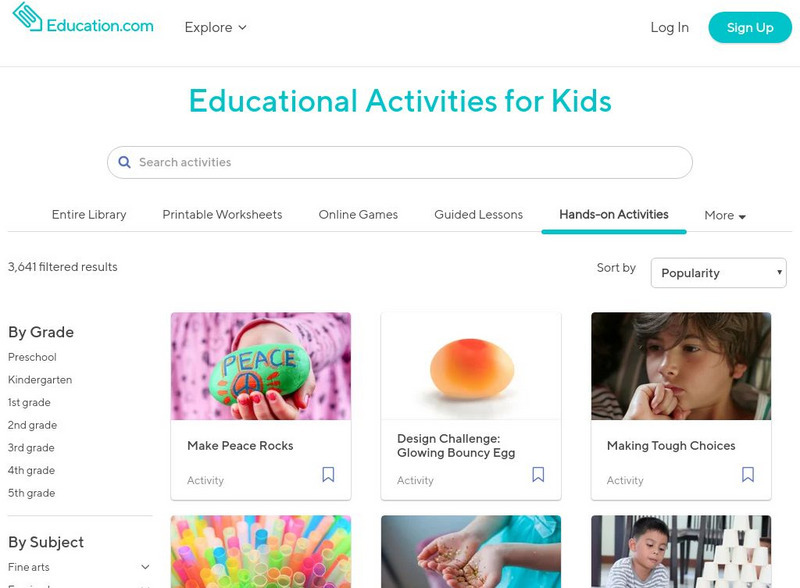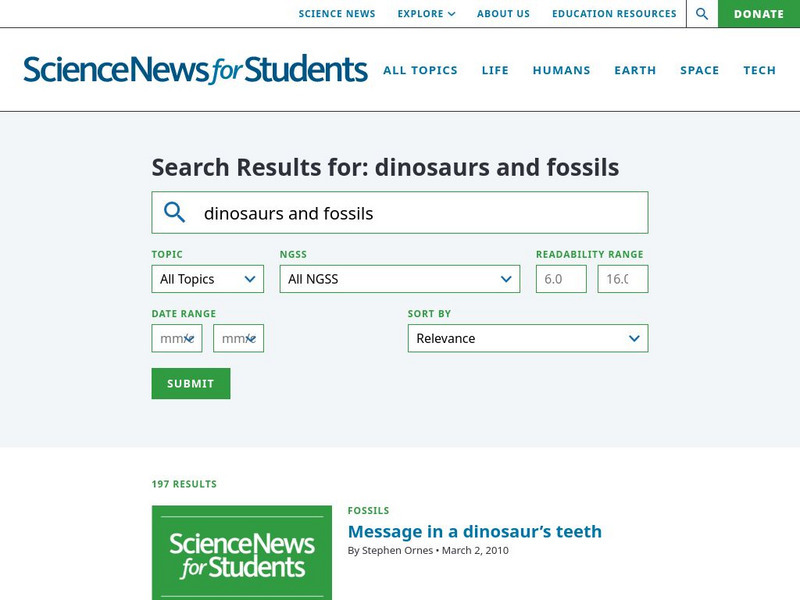Hi, what do you want to do?
Curated OER
Snowball Soap
Students create their own soap sculptures and take them home to use. They gradually add water to soap flakes until they are a consistency that can be molded. They mix the concoction with their hands and then sculpt the "snow" into...
Curated OER
Stay Well Cards
Students use ice-cube brushes to paint pictures demonstrating ways that they can stay healthy.
Curated OER
Reconciliation
Pupils develop an awareness of issues involved in Reconciliation. They use two different stimuli to approach this theme. Students write definitions/interpretations of Reconciliation.
Curated OER
Stay Well Cards
Students draw pictures of things that help them stay healthy such as brushing teeth and washing hands. They write healthy ideas on their pictures. They post the pictures at home and in the classroom as reminders to stay healthy.
Curated OER
Helping Each Other, Near and Far
First graders examine their knowledge of the world as a larger place than just their immediate environment. They examine how people in Africa are fighting malaria and other issues. During the lesson they listen to a story about the use...
Optical Society
Optical Society of America: Optics for Kids: Lenses and Geometrical Optics
Article explaining what lenses are and how they work. At the end of the article, there are links to several hands-on activities for investigating lenses.
Education.com
Education.com: Educational Activities for Kids
[Free Registration/Login Required] Great activities for you and your little ones! Extreme Hopscotch, Taste Test Science, Build Writing Muscles, and much, much more! Links to worksheets and education-related articles.
US Geological Survey
U.s. Geological Survey: Earthquakes for Kids
A collection of articles, games, printouts, facts, science fair ideas, and links through which students learn about the history and science of earthquakes and also explore what it takes to be an "earthquake scientist."
Optical Society
Optical Society of America: Optics for Kids: Make Money Appear Before Your Eyes
A simple experiment that clearly demonstrates how light bends when it passes through water. Accompanied by a good explanation of what's happening, and a link to an article on refraction.
Optical Society
Optical Society of America: Optics for Kids: Make a Green Gumball Black
An experiment to investigate what colors are seen when light is absorbed or reflected by colored gumballs. With links to scientific, academic articles that explain what is happening.
Optical Society
Optical Society of America: Optics for Kids: Mirror, Mirror on the Wall
A simple experiment that clearly demonstrates angles of reflection when light hits a mirror. Accompanied by a good explanation of what's happening, and a link to an article on reflection.
PBS
Pbs Kids Afterschool Adventure!: Operation: Martha's Stem Stories Activity Plan
Welcome to Martha's STEM Stories! STEM stands for science, technology, engineering, and mathematics. You may already know that doing STEM means testing ideas, collecting data, making calculations, and drawing graphs and charts-but you...
Optical Society
Optical Society of America: Optics for Kids: What Causes Rainbows?
An experiment to demonstrate how to make a rainbow and why they form.
Optical Society
Optical Society of America: Optics for Kids: Polarized Light (Pdf)
An investigation into how polarized light behaves, with instructions on how to make a polarizer using glass slides. With a link to an article explaining about polarized light. PDF (requires Adobe Reader).
Optical Society
Optical Society of America: Optics for Kids: Mirrors and Images
An experiment to investigate how many images appear as the angle between two hinged mirrors is increased. Accompanied by an explanation of what is happening, questions for students to consider, and a link to an article about reflection.
Optical Society
Optical Society of America: Optics for Kids: Guiding Light Optical Fiber
This experiment demonstrates the concept of total internal reflection, using basic materials. Accompanied by a detailed explanation of what's happening, and links to articles on reflection and refraction.
Optical Society
Optical Society of America: Optics for Kids: Interference in a Ripple Tank
An investigation, using a ripple tank, into how waves behave when they collide with each other. With an explanation of what is observed, and a link to an article on refraction.
Optical Society
Optical Society of America: Optics for Kids: Black Is Black or Is It?
An experiment with a coffee filter and a marker to see what happens when water touches a black dot, or any other color. With links to several scientific, academic articles that explain what is happening.
Optical Society
Optical Society of America: Optics for Kids: Shimmering Lenses
An experiment using Jell-O to create lenses, to see how light behaves with flat, concave, and convex lens surfaces. With an explanation of what is observed, and a link to an informative article on lenses.
Optical Society
Optical Society of America: Optics for Kids: Bending Light
An experiment using a water lens that demonstrates how the eye sees an image. Accompanied by an explanation of what's happening, and a link to an article on refraction.
Society for Science and the Public
Science News for Students: Nature Resets Body's Clock
Article reports on a recent study which found that people who spent a week in the woods experience a shift of two hours in their internal clocks. Includes a list of vocabulary words from the article.
NASA
Nasa: Space Place: Kids
This collection of resources for children includes games and articles about space exploration. Topics also include the sun and weather.
Society for Science and the Public
Science News for Students: Dinosaurs and Fossils
This section of Science News for Kids features articles on dinosaurs and fossils that are tailored for children. Many of these relate to recent discoveries or topics of debate.
Society for Science and the Public
Science News for Students: Climate Change Could Stall Atlantic Ocean Current
When carbon dioxide levels rise, the currents slow, which leads to temperatures dropping because of the lack of water movement. Europe could suffer as a result of this change.


















